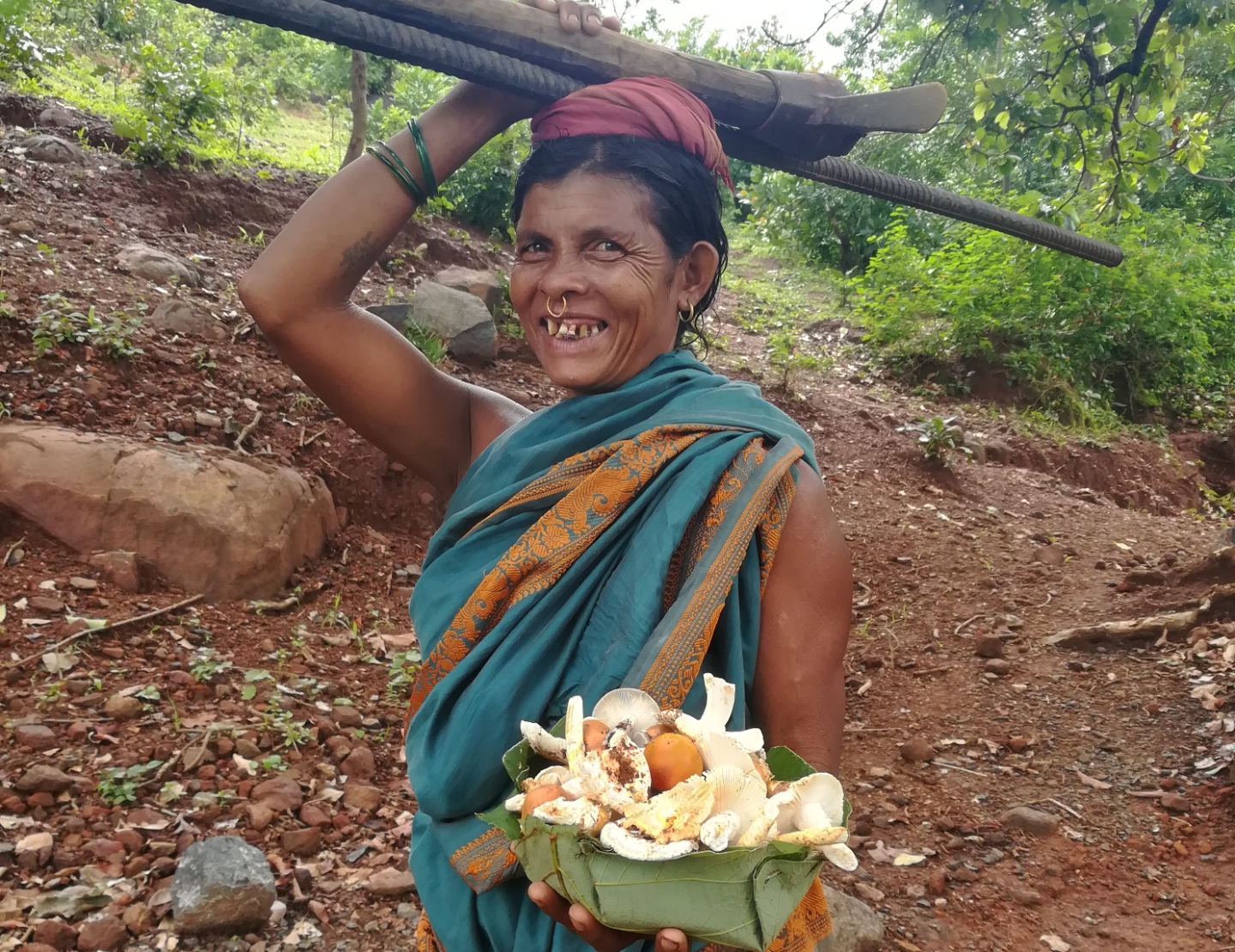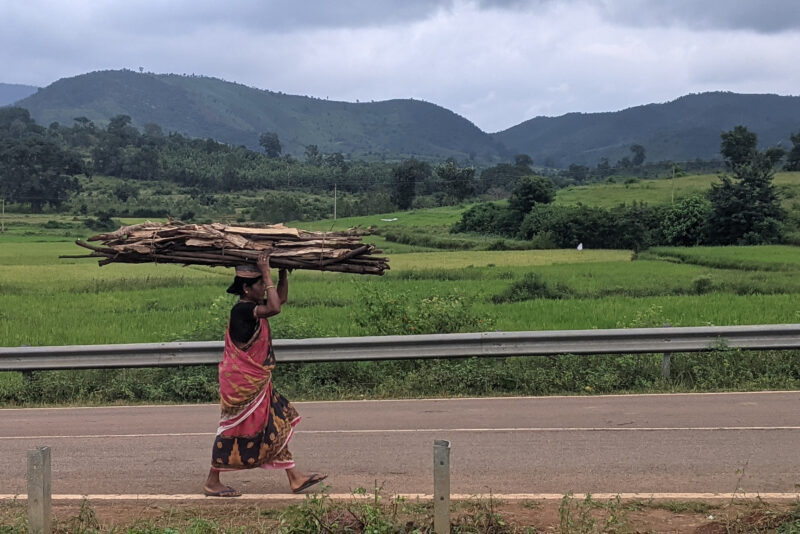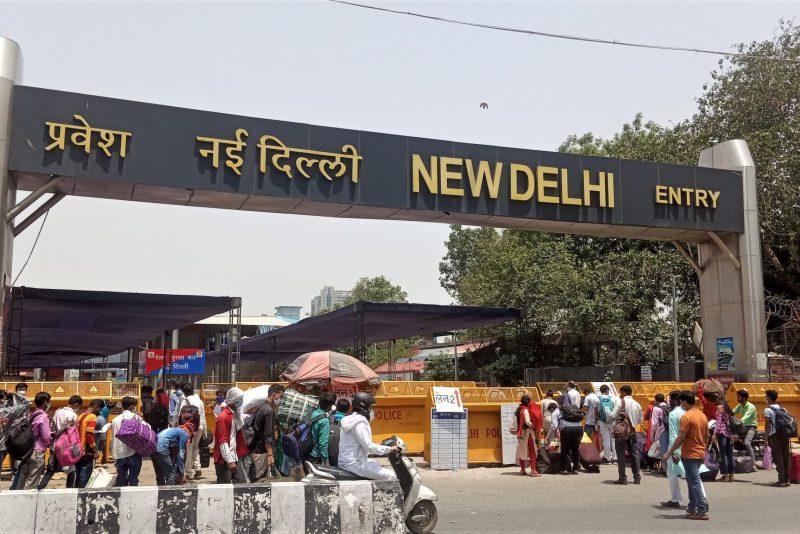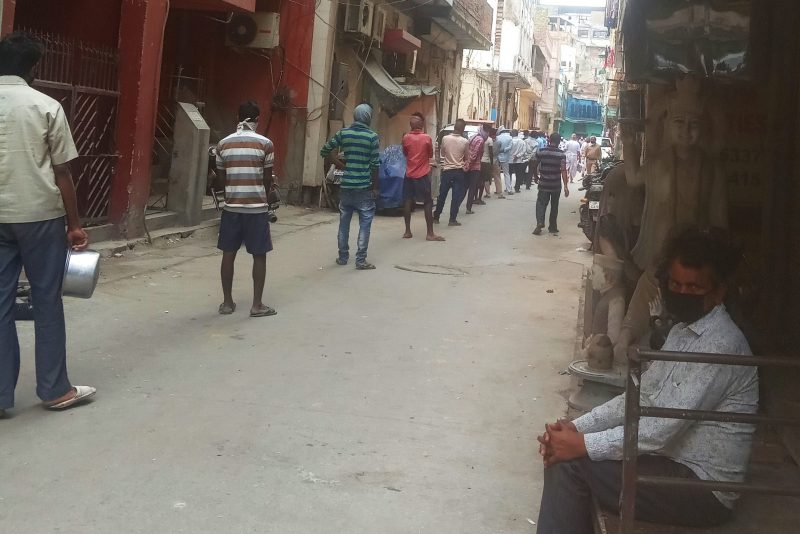As Forests Degrade and Livelihoods Change, What Do India’s Adivasis Eat?

In this blog post, TCI scholar Amrutha Jose Pampackal recounts her experiences speaking with members of tribal communities in Odisha, India, about how deforestation and remittances from migrant workers are impacting their diets.
It was a Friday morning in July and the Adri market in Thuamul Rampur was bustling with activity as people from more than 10 surrounding villages came to buy their weekly groceries. I walked around looking at what was being bought and sold. Unsurprisingly, the offerings bore a striking resemblance to the daily diet local people had described to me in earlier conversations: potatoes, pulses, onions, soya chunks, and dried fish, supplemented with grains grown on their fields or received from the public distribution system.
I was in Thuamul Rampur, located in Odisha state’s Kalahandi district, as part of my exploratory summer fieldwork supported by the Tata-Cornell Institute for Agriculture and Nutrition (TCI). I spent one month in Odisha trying to understand issues of access to nutritious food for tribal communities, commonly referred to as Adivasis. One of the most-marginalized sections of the Indian population, Adivasis have the highest rate of poverty in the country and lag behind other social groups in a number of health indicators.
Adivasis are traditionally forest-dependent communities. As one elder told me, “Our mothers only gave birth to us … It is the forests that raised us.” He explained that his community not only worships the forest as their local deity, but also relies on it for firewood, berries, tubers, and other foods. This made me wonder how changes to the local ecosystem, as well as increasing exposure to extra-local economic forces, could potentially alter the food sources of Adivasis.
Thuamul Rampur presented itself as an interesting site to gather initial insights. Its dense natural forests, once rich with biodiversity, have been rapidly degrading due the construction of dams, increased mining, the rise of eucalyptus plantations, unsustainable agricultural practices, and afforestation programs that promote monoculture. At the same time, an increasing number of youths from the area are migrating away in search of work to supplement their families’ incomes.

Most shoppers at the Adri market purchased inexpensive vegetables, like potatoes and onions. (Photo by Amrutha Jose Pampackal/TCI)
As an outsider who does not speak the local language, the support of a trustworthy partner organization was vital for conducting meaningful fieldwork in Thuamul Rampur, which has poor cellular network coverage and limited transportation facilities. Gram Vikas, an Odisha-based organization that has been working in the area for decades, provided me with necessary assistance. On the day I visited the Adri market, I was accompanied by one of the Gram Vikas team members.Thuamul Rampur presented itself as an interesting site to gather initial insights. Its dense natural forests, once rich with biodiversity, have been rapidly degrading due the construction of dams, increased mining, the rise of eucalyptus plantations, unsustainable agricultural practices, and afforestation programs that promote monoculture. At the same time, an increasing number of youths from the area are migrating away in search of work to supplement their families’ incomes.
I reached the market right as vendors were setting up their stalls. Most of them were selling onions and potatoes, while a couple also offered other vegetables. Priced at 25 rupees per kilogram and 20 rupees per kilogram respectively, onions and potatoes were the cheapest and most popular items.
As some Adivasi women were selecting potatoes, I asked if they were planning to buy other vegetables. While one woman said she would buy a little bit of okra, another responded negatively: “If you do not have money, how can you buy?” When I asked if she has access to any other source of vegetables, the woman said that she gathers some produce from the forest.
In rural Thuamul Rampur, where a large proportion of the people live below the poverty line, July is a difficult month. Most people’s income from the previous harvest is already depleted, but they are unable to take up wage labor as all hands are needed for planting crops on their own farms. When vegetables in the market are unaffordable and the vegetables in their own plots are not yet ready, the forest acts as an important source of nutritious food.

TCI scholar Amrutha Jose Pampackal poses for a photo with Ramesh, a migrant worker she met in Thuamul Rampur. (Photo courtesy of Amrutha Jose Pampackal/TCI)
Ramesh, a 21-year-old shopkeeper I befriended at the market, said that the households that can afford vegetables during this season are those that receive remittances or other forms of non-farm income. A recent estimate suggests that at least 300-400 million rupees flow into Thuamul Rampur as annual remittances from migrants, most of whom work in Kerala.In rural Thuamul Rampur, where a large proportion of the people live below the poverty line, July is a difficult month. Most people’s income from the previous harvest is already depleted, but they are unable to take up wage labor as all hands are needed for planting crops on their own farms. When vegetables in the market are unaffordable and the vegetables in their own plots are not yet ready, the forest acts as an important source of nutritious food.
Ramesh himself has been working as a migrant laborer in Kerala for five years and had just come home for vacation. He plans to return because the 20,000 rupees per month he can earn there is much higher than what he can make in Thuamul Rampur.
Amrutha Jose Pampackal is a PhD Student and a TCI scholar in the Department of Development Sociology at Cornell University. Her research lies at the intersection of land governance and the nutrition security of marginalized communities.





